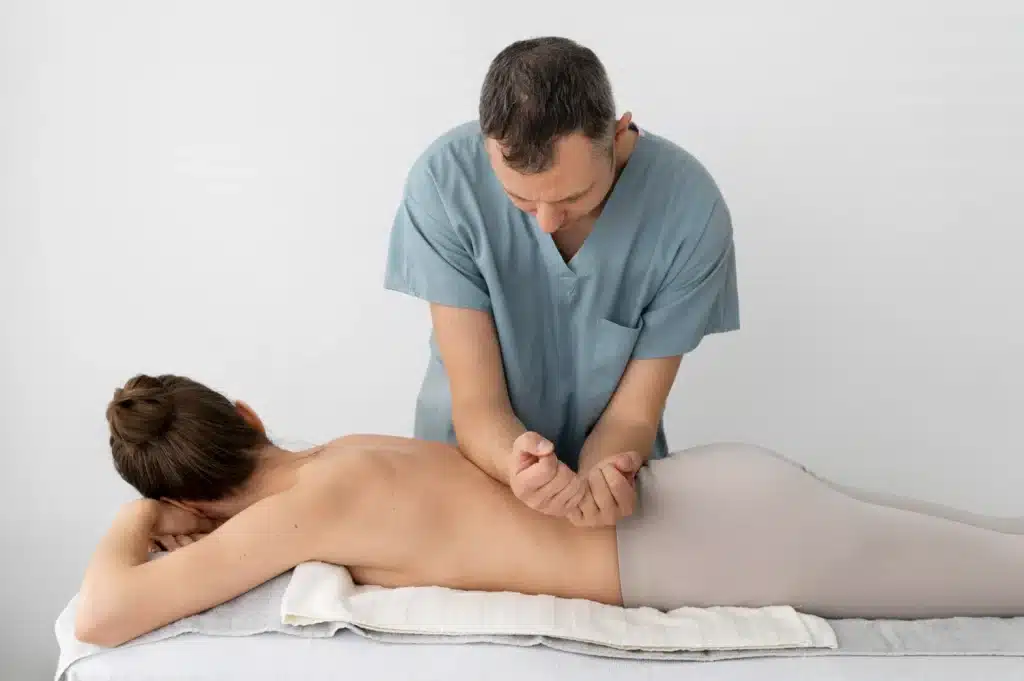Ever wondered how to bill correctly for that hour-long therapeutic massage? You're not alone. Many therapists struggle with proper billing for CPT code For Massage Therapy 60 minutes sessions. Getting it wrong can mean lost revenue or, worse, claim denials.
Ready to master massage billing and boost your practice revenue? Contact our billing experts today to streamline your claims process and maximize reimbursements.
The world of massage therapy billing doesn't have to be confusing. We'll break down exactly which codes to use, how time calculations work, and what documentation you need for successful claims.

Understanding CPT Code 97124 for Massage Therapy 60 Minutes
When billing for therapeutic massage, CPT code 97124 is your primary tool. This code covers essential massage techniques like effleurage, petrissage, and tapotement. But here's the catch - it's billed in 15-minute increments.
For a 60-minute session, you'll bill 4 units of CPT code 97124. Each unit represents 15 minutes of direct, hands-on therapeutic massage. The total session time must meet specific requirements to justify billing multiple units.
Key Components of CPT Code 97124:
- Effleurage: Long, smooth strokes
- Petrissage: Kneading and compression
- Tapotement: Rhythmic percussion techniques
- Direct patient contact: One-on-one therapeutic intervention
The 8-Minute Rule: Your Billing Foundation
Here's where things get interesting. The 8-minute rule governs how you calculate billable units. This guideline applies to all time-based CPT codes, including massage therapy.
| Total Treatment Time | Billable Units | Example |
|---|---|---|
| 8-22 minutes | 1 unit | 20-minute session = 1 unit |
| 23-37 minutes | 2 units | 30-minute session = 2 units |
| 38-52 minutes | 3 units | 45-minute session = 3 units |
| 53-67 minutes | 4 units | 60-minute session = 4 units |
The magic happens at 53 minutes. Once you reach this threshold, you can bill for 4 full units - even if the session runs exactly 60 minutes.
Need help implementing proper billing procedures in your practice? Our team specializes in massage therapy billing and can set up systems that ensure accurate claims every time.
Alternative Codes for 60-Minute Sessions
Sometimes CPT Code 97124 isn't the right fit. Here are other codes you might use:
CPT 97140: Manual Therapy
This code covers joint mobilization, manual traction, and soft tissue manipulation. Use it when your focus shifts from general massage to specific therapeutic techniques targeting joint mobility.
CPT 97112: Neuromuscular Re-education
Perfect for sessions involving balance training, coordination exercises, or proprioceptive work. Don't confuse this with neuromuscular therapy techniques - those fall under 97140.
Combination Billing Considerations
You can combine codes within the same session, but be careful. Insurance companies scrutinize claims with multiple codes. Document clearly why each intervention was necessary.
Documentation Requirements That Get Claims Paid
Strong documentation makes the difference between approved and denied claims. Your notes should paint a clear picture of medical necessity.
Essential Documentation Elements:
- Patient diagnosis: ICD-10 codes linking to treatment
- Treatment goals: Specific, measurable objectives
- Techniques used: Detailed description of interventions
- Patient response: Objective measures of progress
- Treatment duration: Exact start and stop times
Example documentation: "45-minute session of therapeutic massage (97124) targeting bilateral trapezius trigger points. Applied sustained pressure and cross-friction massage. Patient reported 40% reduction in pain scale from 7/10 to 4/10."

Common Billing Mistakes That Cost You Money
We see the same errors repeatedly. Avoid these pitfalls:
Mistake #1: Ignoring the 8-Minute Rule
Billing 4 units for a 50-minute session violates billing guidelines. You need at least 53 minutes for 4 units.
Mistake #2: Double-Billing Related Services
Don't bill CPT 97010 (hot/cold packs) separately if it's part of your massage routine. Many payers bundle this service.
Mistake #3: Using Wrong Codes
Physical therapy codes like 97110 (therapeutic exercise) don't apply to massage therapists unless you have specific training and licensing.
Mistake #4: Poor Time Tracking
Estimate = audit risk. Track exact treatment times for every session.
Medicare vs. Commercial Insurance Differences
Medicare has stricter rules than many commercial payers:
Medicare Requirements:
- Must be prescribed by physician
- Requires established treatment plan
- Limited coverage for massage therapy
- Strict documentation standards
Commercial Insurance:
- Varies by carrier and plan
- May cover wellness massage
- Different prior authorization requirements
- Often more flexible with provider types
Ready to navigate complex insurance requirements? Let our experts handle your billing so you can focus on patient care instead of paperwork.
Maximizing Reimbursement for 60-Minute Sessions
Smart billing strategies can significantly impact your revenue:
Strategy #1: Verify Benefits Before Treatment
Check coverage limits, copayment amounts, and deductible status. This prevents surprise denials.
Strategy #2: Use Appropriate Modifiers
- Modifier 59: When providing distinct services
- Modifier 52: For reduced services
Strategy #3: Appeal Denied Claims
Don't accept initial denials as final. Many overturned appeals result from better documentation or peer review.

Technology Solutions for Better Billing
Modern practice management software simplifies time tracking and documentation. Look for features like:
- Automatic time calculation
- Built-in CPT code selection
- Electronic claim submission
- Denial management tools
When to Seek Professional Help
Consider outsourcing billing when:
- Claims denial rates exceed 5%
- Administrative tasks consume more than 20% of your time
- Revenue cycle extends beyond 30 days
- You lack expertise in complex billing rules
Professional billing services often pay for themselves through improved collection rates and reduced administrative burden.
Your Next Steps for Billing Success
Proper billing for 60-minute massage sessions requires attention to detail and consistent processes. Start by implementing time tracking systems and improving your documentation habits.
Remember: successful billing isn't just about codes - it's about proving medical necessity and following payer guidelines precisely.
The investment in proper billing education and systems pays dividends through improved cash flow and reduced claim denials. Your patients deserve quality care, and you deserve fair compensation for providing it.





